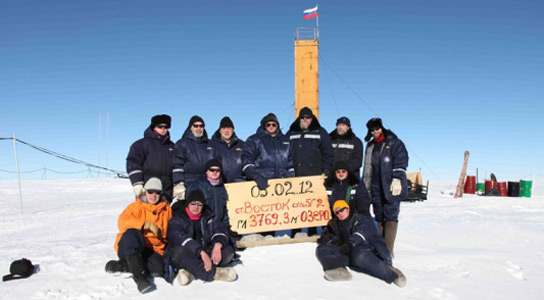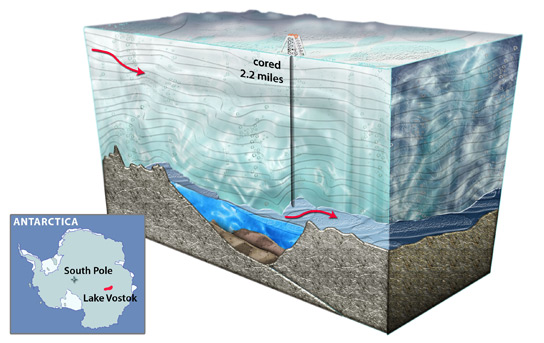Russians Celebrate Drilling into Lake Vostok, Biggest Antarctic Subglacial Lake
February 14, 2012

It took two chilling decades, but the Russian team has finally broken into Lake Vostok, the largest of the lakes hidden under Antarctica’s ice, and the most deeply buried. Lake Vostok has been isolated for millions of years and it might contain specifically adapted microorganisms, that haven’t been seen on the surface of the planet for a long time.

 The Russian drill hit the lake water, 3,769.3 meters down, at 10:25PM on February 5th, 2012. Temperatures had been plummeting as the Antarctic summer ended, and scientists were getting ready to leave before it became too cold, for safety concerns.
The Russian drill hit the lake water, 3,769.3 meters down, at 10:25PM on February 5th, 2012. Temperatures had been plummeting as the Antarctic summer ended, and scientists were getting ready to leave before it became too cold, for safety concerns.
Although the Russian scientists did take samples before leaving, they will most likely have to wait until December to extract any frozen lake samples, and until 2013-14 to retrieve unfrozen lake water. Initially, the Vostok drilling project began as an effort to sample ice-cores to examine ancient climatic conditions. By the mid-1990s, scientists had confirmed the presence of a giant lake buried beneath the ice and speculated that sampling it might yield signs of ancient life.
Drilling was shut down to prevent contamination from kerosene and Freon that was being used as drilling fluids. Drilling started up again in 2005 with a plan to replace the drill bit with a thermal probe once they got near the lake.
The Russian team plans to explore the lake in 2013-14 using different probes, cameras, robots, and samplers. All of the probes will be carried down the borehole in hermetically sealed containers.
The US and UK plan on sampling water and sediments from different Antarctic subglacial lakes in 2012-2013 using heated glacier meltwater to bore holes, which should stay open for at least 24 hours. The UK hopes to get to Lake Ellsworth situated at 3.1 kilometers while the US plans to get to Lake Whillans.
No comments:
Post a Comment